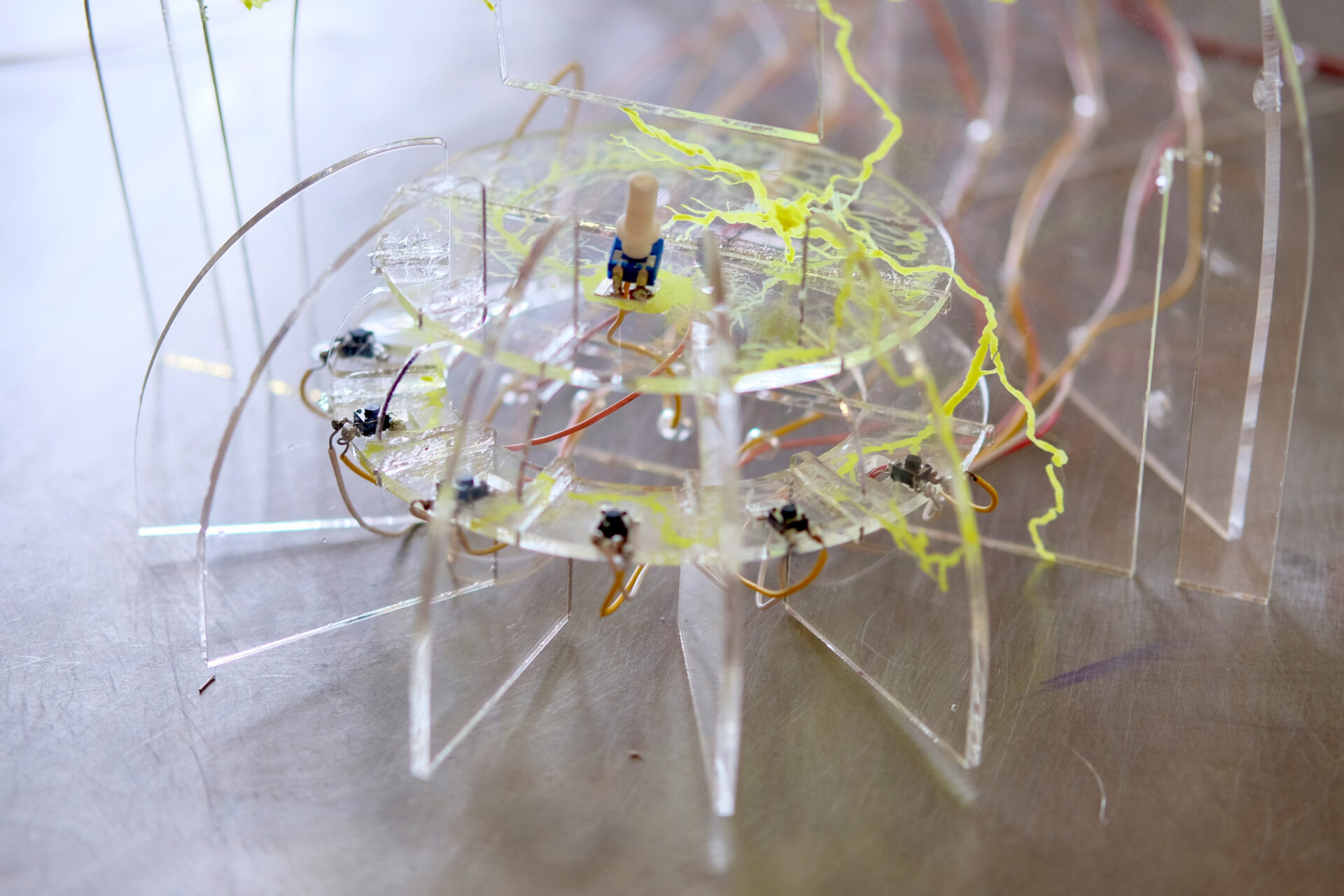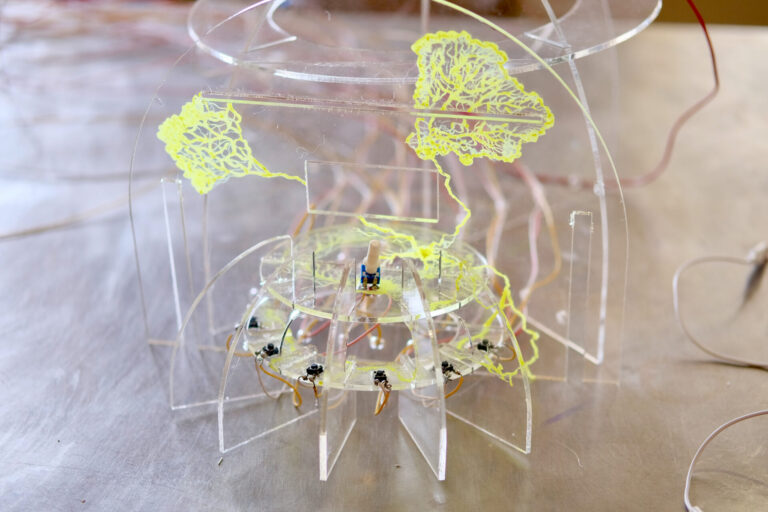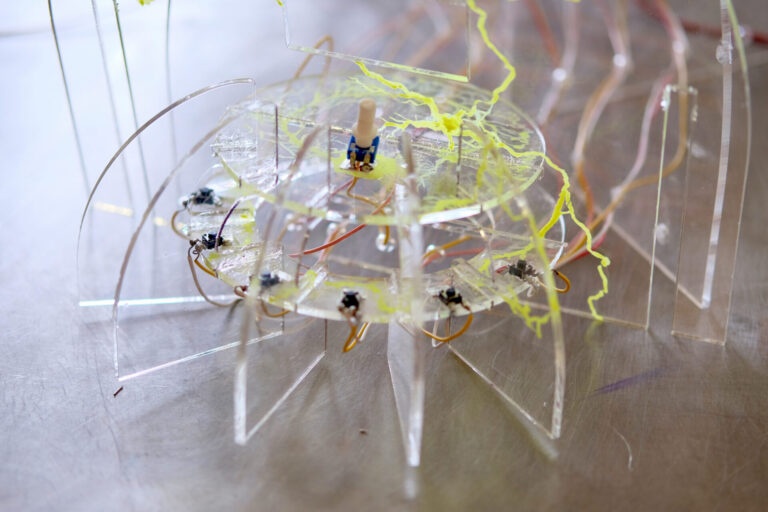This project explores integrating Physarum polycephalum (slime mould) into hybrid-computing interfaces through an instrument using a living Petri dish of slime mould as a key component. Users can press buttons to play notes and twist a potentiometer knob to adjust the voltage sent to the slime mould, bending the pitch.
Slime mould exhibits remarkable computing abilities, solving mazes and complex mathematical problems while mimicking various electronic components. Researchers at the University of the West of England in Bristol observed slime mould acting as a memristor (a resistor with memory), retaining its resistance value when the current flow restarts. In this project, slime mould extends protoplasmic tendrils between two electrodes, with voltage adjustable via the potentiometer, to pitch-bend notes played through the instrument.
As visitors press notes and adjust voltage, they can hear the slime mould’s musical capabilities in real time. Since slime mould quickly dries out when exposed to light, the piece requires ongoing care. When one slime mould dish is revived in the laboratory, a new generation takes over its memory work. Users do not simply play the slime mould; they engage in a delicate duet with their slimy co-conspirator.
Final Project BioHack Academy 2024



